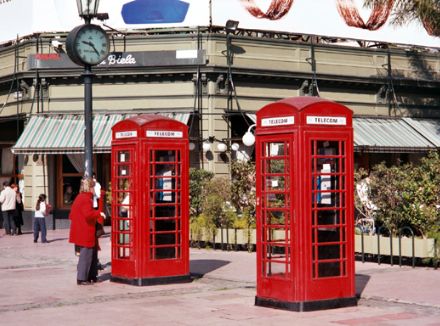Argentina
About Andrew Cusack
 Writer, web designer, etc.; born in New York; educated in Argentina, Scotland, and South Africa; now based in London.
Writer, web designer, etc.; born in New York; educated in Argentina, Scotland, and South Africa; now based in London. read more
News
Blogs
Reviews & Periodicals
Arts & Design
World
France
Mitteleuropa
Knickerbockers
Argentina
The Levant
Africa
Cape of Good Hope
Netherlands
Scandinavia
Québec
India
Muscovy
Germany
Academica
Argentina’s Henley
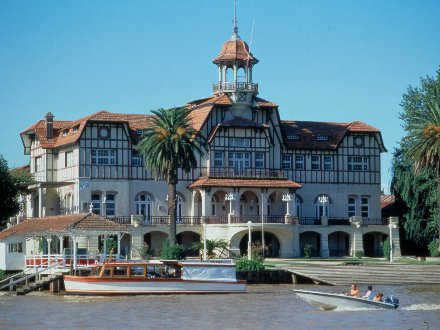
JUST NORTH OF Buenos Aires lies the city of Tigre. The city sits on the southern edge of the series of rivers, rivulets, islands, and eyots collectively known as the Parana Delta, after the Rio Parana which breaks up as it reachs the Rio de la Plata. The town’s riparian geography combined with its closeness to Buenos Aires—a mere twenty miles from the Obelisco—make Tigre a popular weekend and summertime getaway. Since the 1870s, however, it has also been the birthplace and focal point of rowing in the country—Argentina’s Henley. (more…)
Centro Naval, Buenos Aires
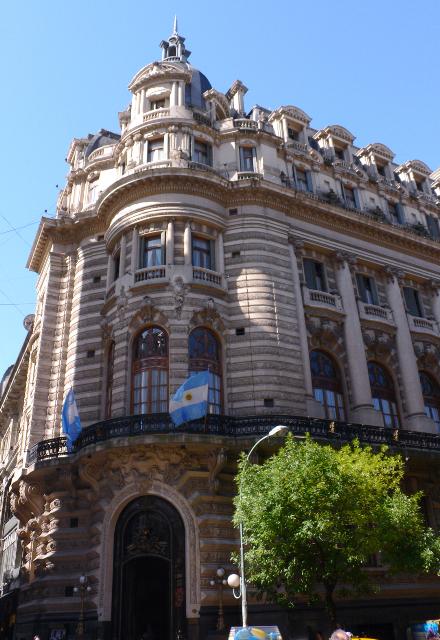
OUR GOOD FRIEND Tori Truett sends greetings from Buenos Aires where she is visting relatives and her salutation sparked a number of memories from my all-too-short time down there. One of these memories was being relieved upon by a bird whilst pottering about the market of San Telmo one afternoon (it remains the only time I have suffered the indignity of such an aerial bombardment). The good city, however, has more beautiful buildings than the Big Apple, both in quality and quantity. Their good buildings are better than ours, but then their ugly buildings are even uglier. (As terrible as the Whitney Museum is, I doubt it matches the Biblioteca Nacional for sheer vulgarity). (more…)
The Red Lion Coffee Shoppe
Or: How Andrew Cusack Became a Tea Drinker
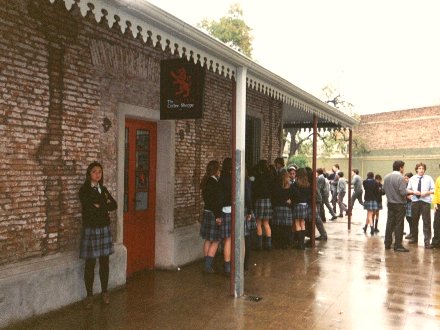
THE HOT SUMMER sun has fled us here in New York, having been replaced by the cooling but somber clouds of rain. My mind can’t help but harken back to an August of just a few years ago when I spent the summer in Argentina. Of course, New York’s summer is Buenos Aires’s winter, but in Argentina winter means prodigious rain and skies of grey, rather than the glorious snows we’re used to in the Big Apple. On the grounds of St. Alban’s College, our happy little school, there was situated the spartan but merry Red Lion Coffee Shoppe.
On many a cold, grey, Argentine August day we would escape the sufferings of education and flee to the Red Lion. There were two points of service at the Red Lion coffee shop: one a window which faced onto the outside (seen above), the other a hole-in-the wall counter which faced onto the little square room which was the shop. It was a simple, sparsely-decorated room with a few chairs and tables, the walls covered with posters lauding South African rugby and New Zealand cricket, and framed prints depicting charming views of other St Alban’s toponyms around the world: the original St. Alban’s in England, St. Alban’s in South Africa, St. Alban’s in Denmark, St. Alban’s just about everywhere. There was only one heater (the Argentines, in their desire to be in all ways like the British, do not heat their buildings properly) mounted onto the side wall opposite the counter and the obvious idea was to sit right next to the heater or else freeze. It was a black moment when one entered the Red Lion only to discover that others – the nerve! – were already situated by the heater. Rest assured, many a rueful glance was exchanged.
Anyhow, while a number of carbonated beverages were on offer, a nice warm cup of tea was much preferred to a cold, refrigerated soda. Tea at the Red Lion, which was invariably Green Hills, was accompanied by chocolate, usually fulfilled by a packet of M&M’s, but occasionally I went for Rhodesia bars which I confess I only ever bought because of their name. (Incidentally, I took a Rhodesia bar home and when I had a fetching young tutor at St Andrews who was one of the last Rhodesians to be born, I gave it to her as a gift at our last tutorial).
I had never been a regular tea drinker before then and am very glad that I acquired the happy habit; it is one which has stood me well throughout the ages. What better companion in Scotland, for example, while reading as the grey tempest of the Caledonian climate brews outside, than a nice cup of warm brew inside? And of course tea need not be a solitary joy. When I think of the hours wasted away in after-rosary cups of tea on weekday afternoons in St Andrews! It would bring scandal to some. Indeed one cold Scottish afternoon the hours of cups of tea gave way to two bottles of port, and then a raid by a gaggle of ne’erdowells on my secret whiskey reserve! (Duly recounted herein).
At any rate, I believe it to be one of summer’s chief deficiencies that it is too hot for the proper, frequent enjoyment of tea, and so I rather look forward to the coming fall and winter seasons. Nestled in a comfy chair with a nice cup of tea and a good book; could there be pleasures more sublime?
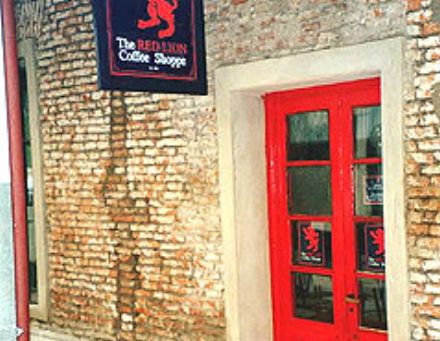
Avenida de Mayo, Buenos Aires
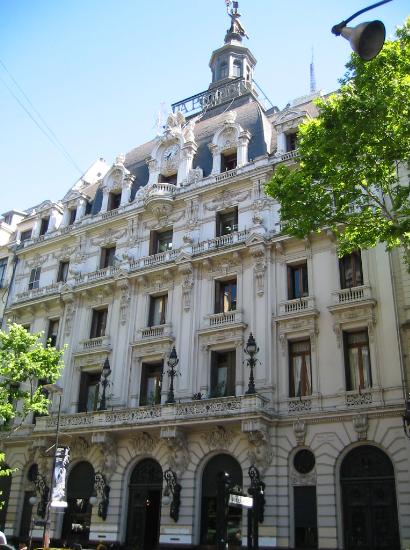
The La Prensa building, formerly home to the newspaper of that name, now the Casa de Cultura.
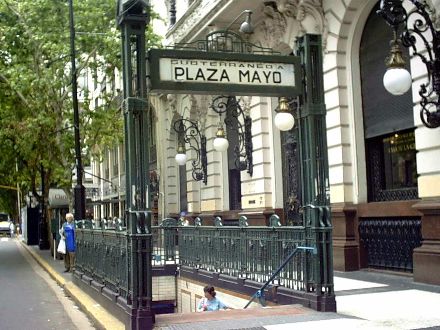
The subte entrance in front of the edificio La Prensa.
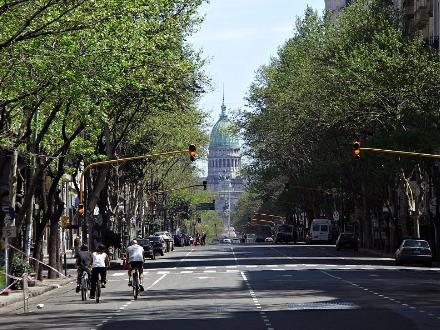
Looking down the Avenida toward the Palacio del Congreso.
The English Tower and Kavanagh Building
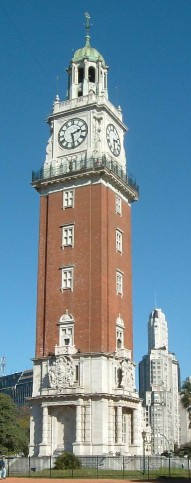 THE SAYING GOES that Argentines are all Italians who speak Spanish and want to be English, which is only just short of the truth. Whatever the quip’s verity, Argentina is a nation of the expatriated and for the centennial year of the 1810 May Revolution, the communities from each of the major mother countries — Spain, Italy, Germany, et cetera — built monuments in dedicated places both to commemorate the contributions their kinsman made to their adopted country as well as to celebrate peace and friendship between Argentina and the given motherland. The Plaza Italia, for example, lamentably bears a monument to the scoundrel Garibaldi, donated by the Italian community.
THE SAYING GOES that Argentines are all Italians who speak Spanish and want to be English, which is only just short of the truth. Whatever the quip’s verity, Argentina is a nation of the expatriated and for the centennial year of the 1810 May Revolution, the communities from each of the major mother countries — Spain, Italy, Germany, et cetera — built monuments in dedicated places both to commemorate the contributions their kinsman made to their adopted country as well as to celebrate peace and friendship between Argentina and the given motherland. The Plaza Italia, for example, lamentably bears a monument to the scoundrel Garibaldi, donated by the Italian community.
For their monumental contribution to the city of Buenos Aires, the English built a tower in the Edwardian style, rather cleverly as it was still the Edwardian period, and the depth of their cleverness was furthered by their naming it the English Tower (officially Torre de los Ingleses, or Tower of the English). Situated in the center of the Plaza Britannia (Britannia Square) at the junction of the San Martin and Libertador avenues, the Tower was designed by engineer Ambrose Poynter and built by Hopkins and Gardom completely (except for mortar) out of materials from England. Around the base are sculptural representations of the English rose, the Scottish thistle, the Welsh dragon, and the Irish shamrock. The dedication at the entrance to the Tower reads “Al Gran Pueblo Argentino. Los residentes británicos. Salud. 25 de mayo 1810-1910” or: “To the Great Argentine People, from the British residents: Salud. May 25, 1810-1910″. Towards the rear of the photo to the right you can see the Kavanagh building (Edificio Kavanagh).
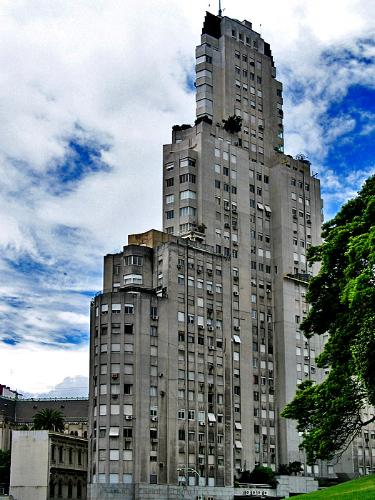
The Kavanagh building is situated on the Plaza San Martin across the avenue from the Plaza Britannia. This 29-storey apartment building was designed by the firm of Sanchez, Lagos, and de la Torre, and was the tallest building in Latin America when built in 1936. The sharp art deco design on an angulated plot is said to resemble a ship at sea, and of course Buenos Aires is a port city — its residents are called porteños after all.
The Kavanagh is unquestionably my favorite ‘modern’ building in Buenos Aires, but then modern architecture has not been kind to the city, at least not in the post-war period (c.f. the National Library). The structures built in the 1950’s were only drab and dull whereas the 60’s and 70’s bore the ill fruits of the ‘lets see how many things we can do with concrete’ trend and tended towards the insidiously hideous rather than the mundane. But no matter however irritating these later obtrusions are, at least Buenos Aires still has the Kavanagh.
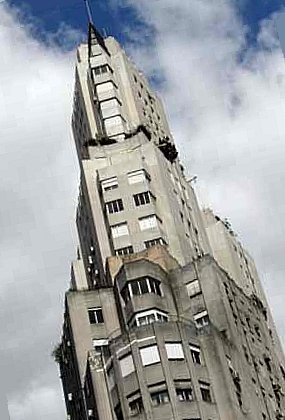
Despite the generations of immigration, investment, interbreeding, and cultural interchange, relations between Argentina and Great Britain were somewhat marred, shall we say, by the shameful attempt by the unhinged wing of the Argentine military to annex the Falklands and rename every geographical feature therein (seriously, I’ve seen the maps). When they were done renaming everything in the Falklands (or ‘Malvinas’ as they would have us believe) the craze apparently spread homewards to the capital. The Plaza Britannia was renamed the Plaza Fuerza Aerea Argentina (from Britannia Square to Argentine Air Force Square), while the Torre de los Ingleses was rechristneed the more ambiguous Torre Monumental. In an even more unfriendly move, the Memorial to the Fallen of the ‘Malvinas’ was built in Plaza San Martin facing the English Tower across the street. In the spirit of peace and friendship, especially regarding two countries which have such deep links as Britain and Argentina, the Memorial really ought to be removed and placed in some other suitable location in the city. Until that time, it remains the Plaza Britannia in my books, and as for the ‘Malvinas’, no such place exists.
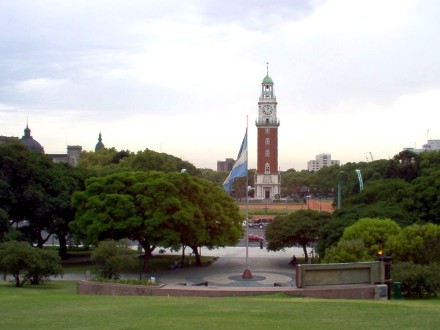
The ‘Malvinas’ memorial viewed from the rear, with the English Tower across the Avenue.
Search
Instagram: @andcusack
Click here for my Instagram photos.Most Recent Posts
- How to Make a Pope April 24, 2025
- Faithful Shepherd of the Falklands April 8, 2025
- Articles of Note: 8 April 2025 April 8, 2025
- Proportionality Destroys Representation April 8, 2025
- Sag Harbor Cinema March 26, 2025
Most Recent Comments
Book Wishlist
Monthly Archives
Categories

